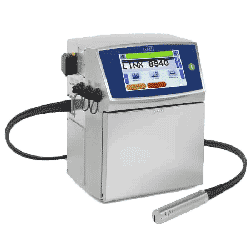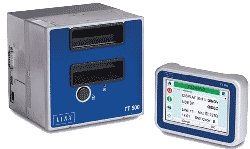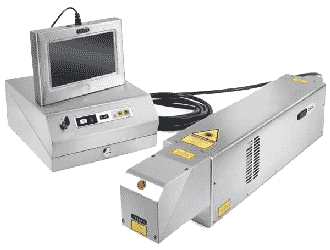Inkjet Coding on Bakery Goods
As the food industry continues to experience growth, the demand for inkjet date coders has increased worldwide. Inkjet coding and marking have become essential for primary packaging in the bakery industry. Indeed, these inkjet coding printers help to ensure accurate labeling and coding for baked goods is crucial. Moreover, it can explicitly print expiry dates, barcodes, QR codes, and other information on the packaging. Additionally, the accuracy of the ink droplets makes the printer information very clear and legible to avoid any errors. Linx Printing Technology UK offers three innovative technologies for inkjet coding on bakery goods. With their innovative solutions, bakeries can ensure they meet the regulatory requirements and provide accurate information to their customers.
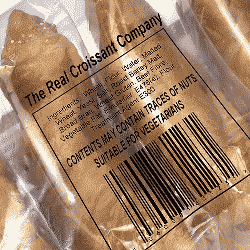
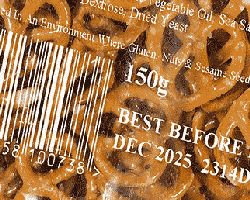
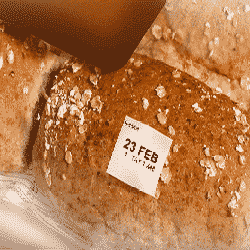
Inkjet Coding on Cereals, Flour, and Breads
Inkjet coding has become vital in the food packaging industry, especially regarding cereals, flour, and bread. Providing consumers with clear and concise product information has never been more crucial. Inkjet printing allows manufacturers to label their products with unique identification codes. This includes expiry dates, barcodes, and batch numbers, ensuring consumers know what they purchase. The technology is fast, efficient, and can print on various materials, including paper, board, and plastic. Furthermore, it provides manufacturers with flexibility and customization options. Enabling them to adjust their messaging and labeling needs as the market demands.

Printing Expiry Date on Baked Goods
The baked goods industry deals with various packaging materials and dusty production environments. Hence, the baked goods industry faces unique challenges in coding and marking. A reliable industrial coder is essential in ensuring accuracy and efficiency here. Especially on fast-moving production lines where there is little room for error. This is where Linx coding solutions come in, with their easy-to-use interface. In fact, Linx printers are the perfect choice for inkjet coding and marking on baked goods. They provide legible and durable prints, crucial for maintaining product traceability and compliance with industry standards. So, if you’re looking for a dependable coding solution for your bakery, look no further than Linx.
Inkjet Date Coder for Baked Products
Packaging requirements in the baking industry are extensive and varied, as the sector encompasses an extensive range of products that includes sugar-free and gluten-free options. In order to keep track of these items and ensure their freshness and quality, there is a need for a reliable and efficient date coding solution for bakery items. Automatic date coding machines are a viable option that can be used to code Julian dates, barcodes, QR codes, and even graphics on all types of packaging material. Linx offers a vast range of coding options that can enhance your productivity and print quality codes, helping you keep your bakery items in top condition for longer. Whether you are a small bakery or a large-scale operation, Linx has the solutions to meet your needs.
To ensure clear and easy-to-read expiry dates, the printing should be legible and placed prominently on the packaging, such as the front or back label. It is also essential to use food-grade ink when printing expiry dates on baked goods. These inks are safe for consumption, compliant with regulatory requirements, and designed to withstand baking while keeping the printed information legible and accurate.
Using food-grade ink that is safe for consumption and compliant with regulatory requirements is essential when printing expiry dates on baked goods. Regulatory authorities require food manufacturers to include expiry dates as part of food safety regulations, so compliance with these regulations is necessary to avoid fines or penalties and to ensure that products are safe for consumption. Therefore, it is important to ensure that the date coder being used meets all relevant regulatory requirements.
When selecting a date coder for bakeries, it is important to choose one that is fast and efficient enough to keep up with high-volume production while ensuring accurate and legible printing. The date coder should also be easy to set up and operate to reduce downtime and minimize errors during the printing process. Additionally, some date coders come with software that allows customization of printing settings, such as font size and expiration date format, to meet the specific needs of the bakery.
Date coders for bakeries can use various printing technologies such as inkjet, thermal transfer, or laser. The choice of technology will depend on factors such as the type of packaging material and the desired level of detail. There are various printing methods available for printing expiry dates on baked goods, including inkjet, thermal transfer, and laser. Each method has its own advantages and disadvantages, and the best method will depend on factors such as the type of packaging used, the volume of production, and the desired level of detail.
It is important to ensure that expiry dates are printed legibly and in a prominent location on the baked good’s packaging, such as the front or back label. This helps consumers quickly identify the product’s expiration date and avoid consuming expired products. Additionally, regulatory agencies require bakeries to include expiry dates and other mandatory information on their products. Therefore, ensuring that the date coder being used complies with the relevant regulatory requirements is essential.

